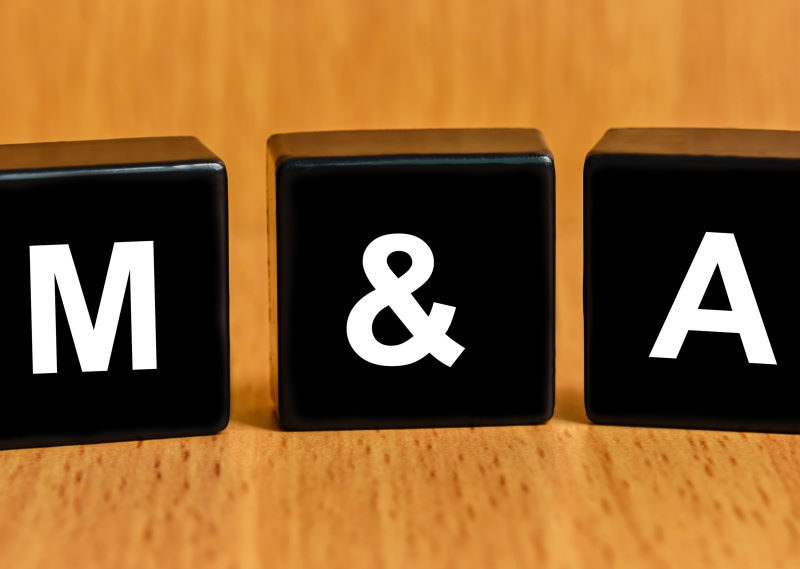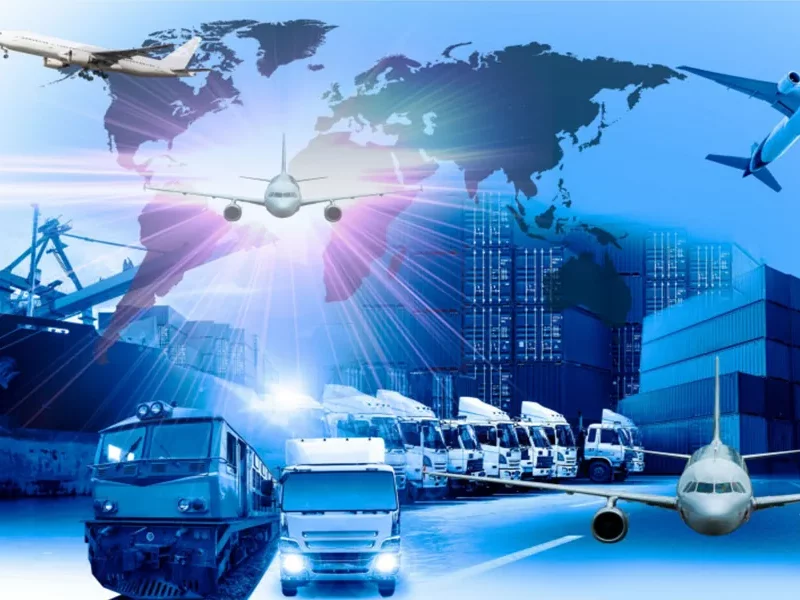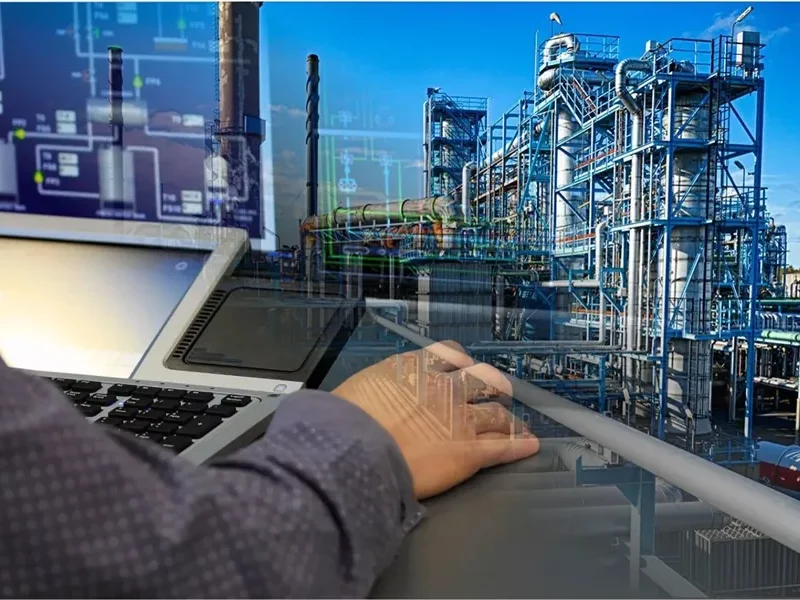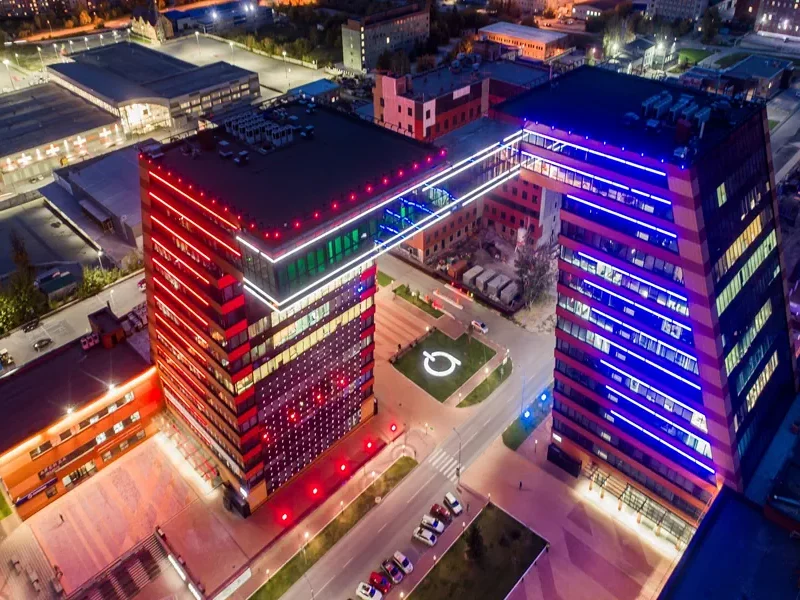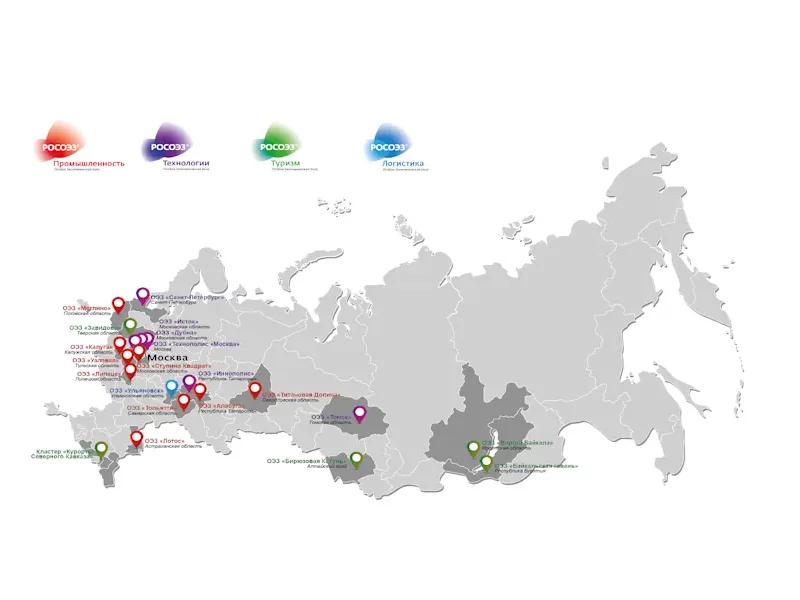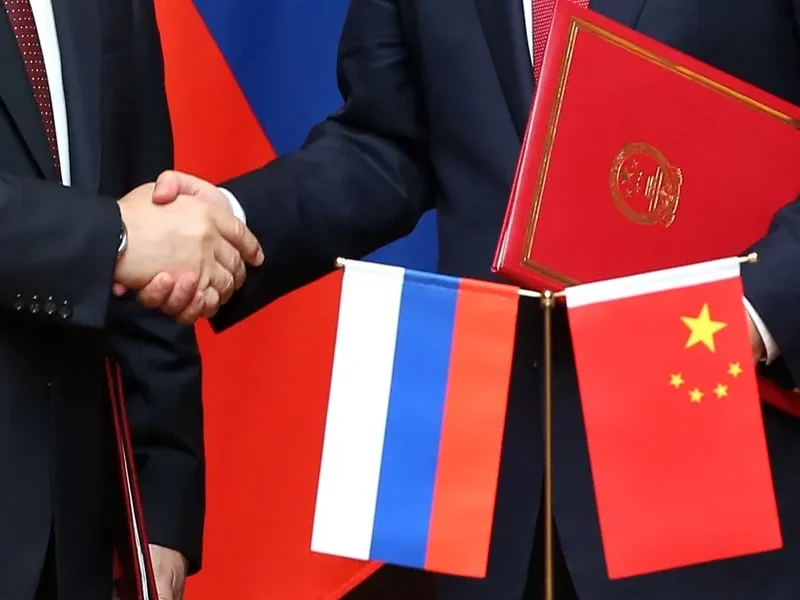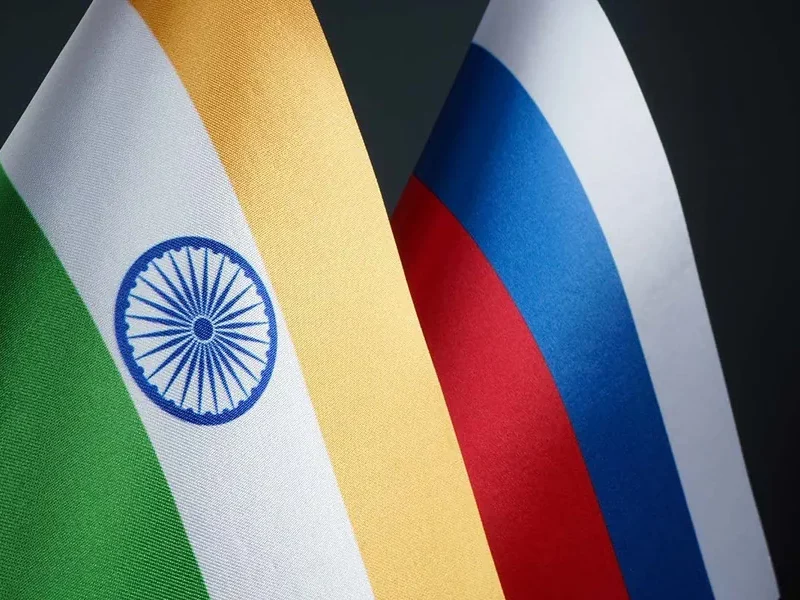Mergers and acquisitions of companies (from the English mergers acquisitions, abbreviated M&A) is a type of transaction in which shareholders of one legal entity gain control over the shares of the second. It is usually used when consolidating enterprises in one industry or during vertical integration to increase their presence in the market, and, as a result, to maximize profits. Mergers and acquisitions of companies often lead to violations of the requirements of the legislation regulating competition and require approval by the antimonopoly authorities.
Mergers and acquisitions of companies — goals and effectiveness of the procedure

In 2018 alone, 12.7 thousand M&A transactions (mergers and acquisitions) totaling $3.35 trillion were concluded in the world (figures are provided by the Dealogic agency).
The motives for mergers and acquisitions can be different:
- getting more market volume;
- increasing economic influence;
- synergy effect;
- cost savings due to scaling;
- elimination of key competitors from the market.
These are the main goals, but they are not always so obvious.
Mergers and acquisitions of companies are sometimes carried out for technical purposes, for example, to restructure debt, to repay it by merging the debtor and the creditor in one person. Restructuring through mergers and acquisitions allows you to terminate the loan obligation.
Mergers and acquisitions of companies — types
Types of mergers and acquisitions can be divided into 2 groups:
- with reorganization;
- without reorganization.
In its pure form, a merger or acquisition should be completed by reorganization. From the point of view of civil law, as a result of such an M&A transaction, the “target company” ceases to exist as a legal entity.
During the takeover, it joins the buyer company, during the merger, the assets of both companies are combined and one new legal entity arises. Accordingly, two global stages of the transaction can be distinguished:
- acquisition of shares;
- corporate merger or affiliation events.
In practice, the second stage is not always expressed in its pure form, as a reorganization. Sometimes the acquired company remains a subsidiary in relation to the buyer, the transaction will still belong to the M&A type and be considered from this point of view.
Reorganization almost never becomes a stage of cross-border transactions.
Such transactions usually last from six months or more, sometimes up to several years. They require huge time, human and financial resources. Especially at the stage of approvals and corporate procedures.
Therefore, the goals set by the initiators should be significant, the transaction should bring substantial profit, regardless of the amount of money spent.
Interestingly, mergers and acquisitions of companies may be of interest to an investor who has invested in the shares of the target company or buyer.
Usually, when information about a planned purchase enters the market with an indication of the approximate transaction price, the share price of both participants grows on inflated expectations.
The evaluation of mergers and acquisitions and the resulting economic effect can be objectively carried out earlier than three years after the completion of the transaction. Only then it is possible to fully evaluate the result of synergy.
Risks of mergers and acquisitions

When planning mergers and acquisitions of companies, it is necessary to carefully calculate not only the potential benefits, but also the risks. This is usually done by the investment division of companies, often with the help of consultants involved.
Among the most anticipated risks of mergers and acquisitions:
- Wrong choice of strategy.
When forming a strategy, you can incorrectly define the target company. For example, underestimate the difficulty of obtaining approvals from the regulator. Often, the buyer incorrectly estimates the amount of investment required in order to obtain the necessary synergistic effect.
- Incorrect capitalization estimate.
There are cases when, after the completion of the reorganization, the capitalization of the shares of a new company turns out to be lower than when adding up the capitalization of shares of legal entities before the merger.
- Financial risks.
They can be diverse, including the inability to attract financing for the transaction, its high cost and the need to buy shares from minority shareholders.
- Infrastructure risks.
They are often associated with the inability to quickly combine technological processes, with the resistance of management and the workforce.
- External risks.
Most often they belong to the political group. At the transnational level, this type of risk can be expressed in the application of various kinds of sanctions.
To avoid these risks, it is worthwhile to involve M&A specialists in conducting transactions who will be able to assess possible risks and create several stress scenarios for the development of events.
Risks in M&A transactions are assessed based on different principles. Usually, each of them receives an assessment based on the relevance of its implementation and the amount of damage that the company may suffer when it occurs.
Further, there is a need to carry out risk management measures, reducing the likelihood of implementation and the severity of the consequences. The effectiveness of mergers and acquisitions always depends on the quality of risk assessment.
Mergers and Acquisitions of companies — M&A transaction planning

The Russian market of mergers and acquisitions is quite active. Moreover, in recent years, its peculiarity is that the key players include state-owned banks and corporations.
The investment activity of Sberbank, VTB Group, Rostechnology Corporation, which recently managed to consolidate 100% of AVTOVAZ shares, is extremely high. Accordingly, their strategy is determined by the state economic policy aimed at structuring certain markets and industries.
Private players are also active, but in financial terms, the volume of transactions is less than mergers and acquisitions of companies with state participation.
The volume of cross-border transactions has decreased somewhat, this is due to the sanctions regime and the general decline in available funds in the economy due to the pandemic.
The dynamics also differ by industry, in 2020-21 the IT business market is the busiest, capable of providing a high level of profitability. Based on these factors, a strategy for a specific transaction is being developed.
Types of M&A transaction strategies
Mergers and acquisitions of companies are usually carried out based on the following types of strategies:
- industry;
- vertically oriented.
In the first case, the target company is selected in the same industry in which the buyer works. The strategy is aimed at expanding its presence in the market, increasing its influence.
In mergers and acquisitions, industries can be selected according to different principles, including related ones.
The vertically oriented strategy is based on the purchase of suppliers. For example, an automotive company may purchase a manufacturer of chips needed for vehicle control systems or an IT company that creates software for autopilots.
When developing a strategy, it is necessary to solve the following issues:
- is a long-term business development planned or is a certain asset sale date fixed, or will it be realized when the shares of a new legal entity reach a certain capitalization level;
- will the transaction be a single one or will it turn out to be a link in a chain of similar ones aimed at consolidating its presence in the market;
- how the operational management of the acquired assets will be carried out.
Without answers to these questions, the strategy will be incomplete, and not always leading to a successful result.
The company’s division responsible for strategy development usually operates according to the following algorithm:
- Choosing a target company or several companies operating in related industries;
- Determination of key financial indicators that determine the need for a transaction and its planned result – NPV (net present value, Net present value), the indicator makes it clear how much the asset being acquired will cost after a certain period of time, taking into account inflation and a number of reducing coefficients, and IRR (internal rate of return, Internal Rate of Return), the indicator determines the actual level of profitability as a percentage;
- Identification of sources of financing (own funds, bank loan, placement of a bond loan);
- Conducting internal corporate procedures aimed at approving the planned transaction, for example, its approval by the Board of Directors, taking into account the approval and the required budget;
- Obtaining the necessary approvals;
- Choosing a financial or investment advisor;
- Conducting an audit (Due Diligence);
- Asset valuation by an independent appraiser (if necessary);
- Preparation of documents;
- Transaction execution – signing of documents, payment, re-registration of shares;
- Mandatory repurchase of minority shareholders (if necessary);
- Reorganization (if provided).
The sequence of stages practically does not change, but some of them can be excluded. The structure of mergers and acquisitions from the point of view of building a transaction is usually complicated, there are guarantors, financial intermediaries, banks in which funds are deposited.
Sometimes the bank becomes an independent participant in the merger and merger of companies, receiving part of the acquired package as payment for the provision of financial services.
What is a cross-border asset acquisition transaction? Difficulties and risks in conducting cross-border mergers and acquisitions

Mergers and acquisitions of companies do not always occur only on a national scale, cross-border transactions are quite common. They can be the acquisition of an enterprise abroad by a Russian business, or the acquisition of a joint-stock company in Russia by a foreign firm. This may be just a takeover transaction, in which organizations with foreign incorporation act as shareholders from the parties to the contracts.
All these cases cause the need for regulation with the help of foreign law. English law is the one referred to. To understand what a cross-border asset acquisition transaction is, examples can be given.
For example, the purchase by Rusal of the oldest aluminum plant in Germany, Aluminum Rheinfelden. Interestingly, the purpose of the acquisition turned out to be only patents belonging to the plant, with the help of which it was planned to modernize Rusal’s production processes. This suggests that the goals of mergers and acquisitions can be completely different.
Regulation by foreign, English law and domestic legislation of two or more countries is not the main difference from domestic transactions, there are also such:
- the need to attract foreign registrar law firms, it is often impossible to make a deal without them;
- a clearly established list of transaction documents that are regulated by English law is the Share purchase agreement (SPA) – an analogue of the purchase and sale agreement and the Shareholders agreement (SHA), the shareholders agreement;
- the almost mandatory participation in the structuring of the transaction of investment consultants, whose fee is quite high, is often expressed as a percentage of the transaction price, which causes a high level of transaction costs, commissions and fixed fees for the support of M&A stages;
- a complicated system of guarantees for the execution of the transaction, the involvement of intermediaries and mediators who control the fulfillment of obligations by the parties;
- the practical impossibility of certifying the transaction by restructuring in the form of a merger or accession, we have to limit ourselves to simply owning shares (for Russian residents).
To build your own strategy, you need to know the main types of cross-border M&A transactions, these are:
- acquisition of shares of the target company from individuals and companies;
- acquisition of only the assets of the target company, sometimes by creating a joint venture;
- participation in the privatization of assets produced by foreign states.
Risks of cross-border M&A transactions
Cross-border M&A transactions have their own list of risks.To the above-mentioned main risks are added:
- currency.
Unstable exchange rate of the national currency can make the cost of acquisition significantly higher;
- transfer.
The acquisition of foreign assets may be subject to currency regulation at the time of transfer of funds across the border;
- communication.
The difference in national mentalities sometimes leads to the fact that the norms of contracts are understood by the parties differently and this leads to corporate conflicts;
- domestic politics.
An already prepared and almost completed transaction can be arbitrarily stopped by the government of the country in order to protect the interests of national business;
- the risk of a “pig in a poke”.
Conducting an audit of a foreign asset before the takeover may not reveal the risks specific to this country. But this risk can be minimized by choosing an experienced investment consultant.
In the latter case, English law offers a complicated mechanism for regulating and reducing the level of risks. The so-called seller’s Guarantees, Reps and Warranties.
Terms of Reps and Warranties. purchase and sale agreements oblige the seller to compensate for the financial damage that will be revealed during a certain time period after the closing of the transaction. If it is associated with those risks that could not be identified during the audit of the asset.
Sometimes there are restrictions on the subject composition of M&A transactions with a foreign element. In some countries, the situation when a company with registration in offshore zones acts as a party to the transaction is not welcome. The above-mentioned problems of mergers and acquisitions should be envisaged already at the stage of strategy development.
Regulation of mergers and acquisitions
Mergers and acquisitions of companies usually occur as a normal transaction of purchase and sale of shares in the case of a takeover, then expressed in the form of merger, and in the form of reorganization of companies in the form of a merger.
Reorganization is regulated by the relevant norms of the Civil Code of the Russian Federation and the Law “On Joint Stock Companies”, purchase and sale is also the Civil Code of the Russian Federation, but not everything is so simple.
As a rule, such transactions are also subject to the norms of anti monopoly legislation designed to prevent excessive concentration of assets of one industry in the hands of one owner.
Accordingly, it is possible to name the key regulatory legal acts regulating mergers and acquisitions of companies:
- The Civil Code of the Russian Federation;
- The Law “On Joint Stock Companies” No. 208-FZ (Articles 15-17 in terms of regulation of reorganization, Article 84.2 in terms of regulation of mandatory repurchase of shares from minority shareholders);
- The Law “On Protection of Competition” No. 135-FZ (Articles 126.1-129).
- Other regulatory legal acts related to M&A transactions.
As mentioned above, part of transactions with a foreign element at the stage of purchase and sale of shares may be regulated by English law. It is also worth noting that certain actions performed during the consolidation of shares are coordinated by the Central Bank of the Russian Federation.
If (in Russia) the consent to M&A transactions is issued by the FAS of the Russian Federation, agencies of various levels are responsible for their approval abroad.
Thus, the already mentioned purchase by Deripaska’s aluminum holding of a plant in Germany was approved at the level of the federal government.
Difficulty in obtaining regulatory approval
The legislation of many countries contains restrictions on the acquisition of assets by foreigners in the most important industries and the approval of transactions sometimes takes years.
The probability of receiving a positive decision of the regulator in Russia often depends on the plane in which the transaction is made.
If a horizontal company is acquired in the same industry and concentration increases, competition decreases and the risk of manipulation of product prices increases, it can be difficult to obtain consent.
In the case when vertical integration occurs, suppliers are acquired or the product line is expanded, the regulator will be more willing to give permission.
An example when the regulator refused approval may be the situation when in 2004 the privatization of the operator of railway cars “SG-trans” took place.
The Federal Antimonopoly Service of the Russian Federation refused permission for their acquisition to Rosneft, since at that time it already owned a significant fleet of wagons.
Previously, the process of mergers and acquisitions required either notification of the FAS of the Russian Federation or prior approval, which was sometimes difficult.
For example, the fact that the regulator required mandatory disclosure of all final beneficiaries – individuals, which not all businessmen agreed to.
Since 2019, the situation has changed slightly in terms of the subject composition of persons falling under the approval requirements, it has become a less significant factor affecting strategies.
Over the past 2 years, amendments to the 135-FZ (Competition Law) aimed at increasing the financial threshold of the transaction price, after which approval is required, have led to a 50-fold decrease in the number of M&A, for which preliminary approval is required.
Currently, only mergers and acquisitions of companies that have assets of over 7 billion rubles, and the value of the acquired asset is over 400 million rubles, fall under mandatory preliminary approval.
Since 2019, there are no more than 1,000 of them throughout the country annually. At the same time, the need for coordination extends to transactions made in national jurisdiction and to transactions with foreign participation.
At the same time, it is worth noting that in addition to formal approvals of the FAS of the Russian Federation, there are other types of them. So, if the party to the transaction is an organization with state participation, it is required to obtain a directive from the supervising ministry or the Federal Property Management Agency. Often the decision to issue such directives is made at the level of the Government of the Russian Federation.
Mergers and acquisitions of companies — examples of M&A

The Russian economic history of the last decades offers successful and unsuccessful examples of M&A transactions. Consider transactions when it was possible and failed to achieve the goals set for the merger and acquisition of companies.
Clean and successful transactions are quite rare, more often problems of different levels of complexity begin to arise after completion.
Examples of not entirely unsuccessful M&A deals
As an example of such a situation, one can cite the acquisition in 2008 of JSC Cryogenmash, a manufacturer of air separation plants for metallurgy (Balashikha) Gazprom (Gazprom Bank) from Promsvyazkapital Group.
In 2010, the Federal Tax Service added taxes to Cryogenmash for 2005-2008 for 700 million rubles and more than 300 million penalties and fines.
“A tax evasion scheme was created for the purpose of embezzlement and money laundering,” the press reported.
Gazprom eventually managed to restore the financial condition of the plant, but the transaction price eventually turned out to be significantly higher than originally expected.
Studying the Russian experience, it should be borne in mind that the domestic market of mergers and acquisitions has its own characteristics. Often a deal is the final stage of a long-term corporate conflict.
Thus, Promsvyazkapital acquired a stake in JSC Cryogenmash from JSC Novolipetsk Metallurgical Combine as a result of a long corporate conflict, and then was able to consolidate 100% of the shares.
This transaction has gone down in the history of Russian corporate law as a reflection of such a conflict management strategy as the “White Knight”.
It reflects a situation when a target company is trying to absorb, but another market entity comes to its aid, acquiring shares and interacting with the original buyer.
Examples of successful M&A transactions
Among the most successful in Russia are the following mergers and acquisitions:
Acquisition by SAFMAR Group of Eldorado, M.Video and MediaMarkt. Without reorganizing, it was possible to create a holding company that controls a significant part of the Russian retail market in the field of electronics.
Three consecutive deals implemented a carefully developed takeover strategy by industry. The first two were closed in December 2016, the third in August 2018.
The total cost of acquisitions exceeded $ 2 billion, not only companies were bought, but also market shares, a pool of buyers, brands and real estate: owned and rented. Over the past years, the holding has been demonstrating steady revenue growth.
VTB Group’s creation of its own agricultural cluster. The State Bank acted as an agent for structuring the industry, consistently acquiring assets that needed to change ownership.
Within a few years, the bank acquired:
- 49% in JSC “United Grain Company”;
- 100% grain trader “Mirogroup”;
- shares of Novorossiysk Seaport;
- shares of PJSC Novorossiysk Bread Products Plant;
- the controlling stake of the operator of railway cars “Rusagrotrans”;
- shares of a number of other companies operating in this market.
Demeter-Holding, a legal entity specially created for these purposes, became the holder of the packages. The entity was a vertically integrated holding company providing a full cycle of support from grain production to export.
Next, the strategy of exiting the transaction was implemented when the maximum capitalization of the asset was reached. Less than 50% of Demeter Holding was sold to Russian investors.
VTB retained a controlling stake in the business and maximized profits. The value of the transaction was not disclosed, but it was noted that it was monetary and profitable.
These successful examples of mergers and acquisitions show that the most successful are consistently implemented asset consolidation strategies in the industry, which represent a chain of interrelated transactions. It is this type of mergers and acquisitions of companies that can bring the maximum economic effect.
Example of a merger and acquisition transaction for the purpose of debt restructuring
An interesting example of a merger and acquisition of companies in order to restructure debt can be an asset exchange transaction between SUEK and RusHydro.
As a result of the transaction, SUEK received shares of Primorskaya GRES and Luchegorsky coal mine, strengthening its energy presence in the Far East.
Rushydro managed to solve the problem of accumulated debts of the Far Eastern Generating Company with the help of asset exchange. The deal was discussed and agreed upon at the level of the Government of the Russian Federation, which, of course, has no formal authority to approve transactions, but it acted as a guarantor of the fulfillment of obligations by both parties.
As a result, SUEK received the consolidation of assets and the effect of synergy, Rushydro managed to reduce the financial burden on the balance sheet of DGC, improve its financial performance, while getting rid of non-core assets.
Разрабатываем Стратегии для собственников бизнеса в целях оптимизации группы компаний, решения нестандартных задач и продажи активов. Оказываем услуги по сопровождению сделок M&A, управлению непрофильными активами и проектами в целом.



